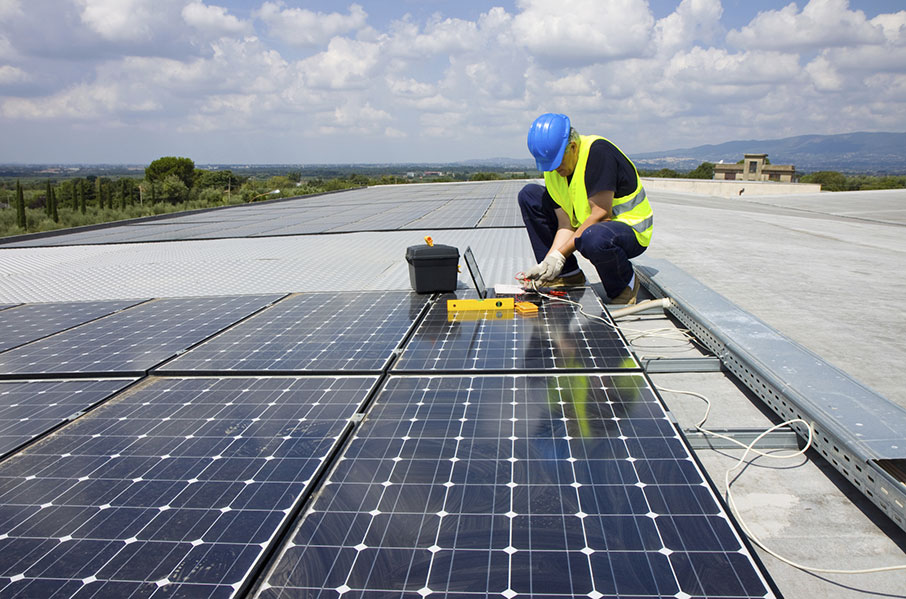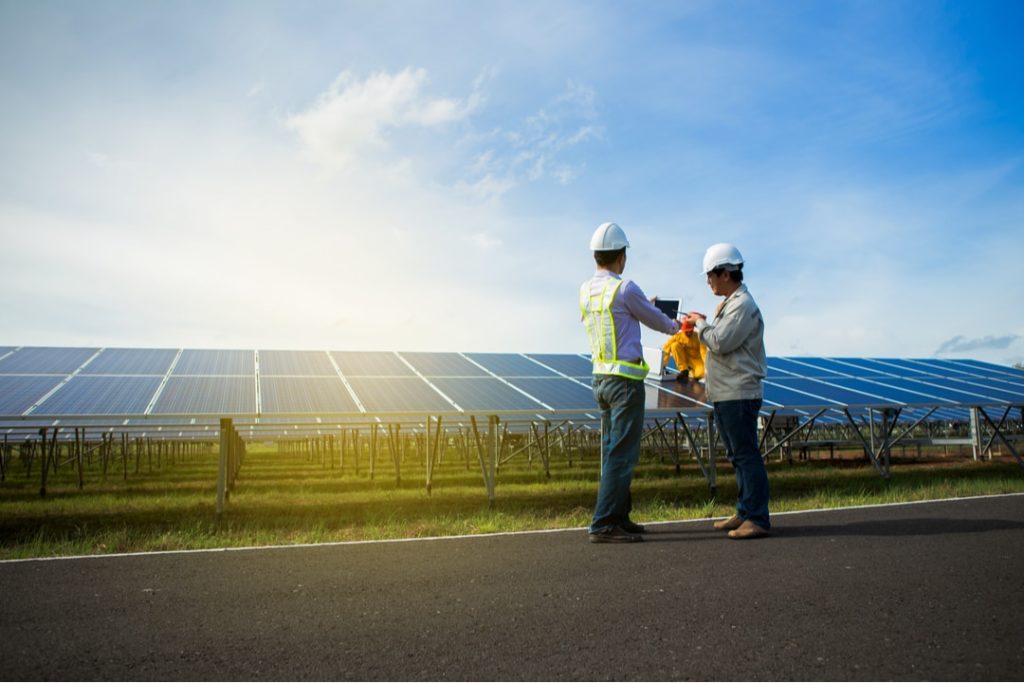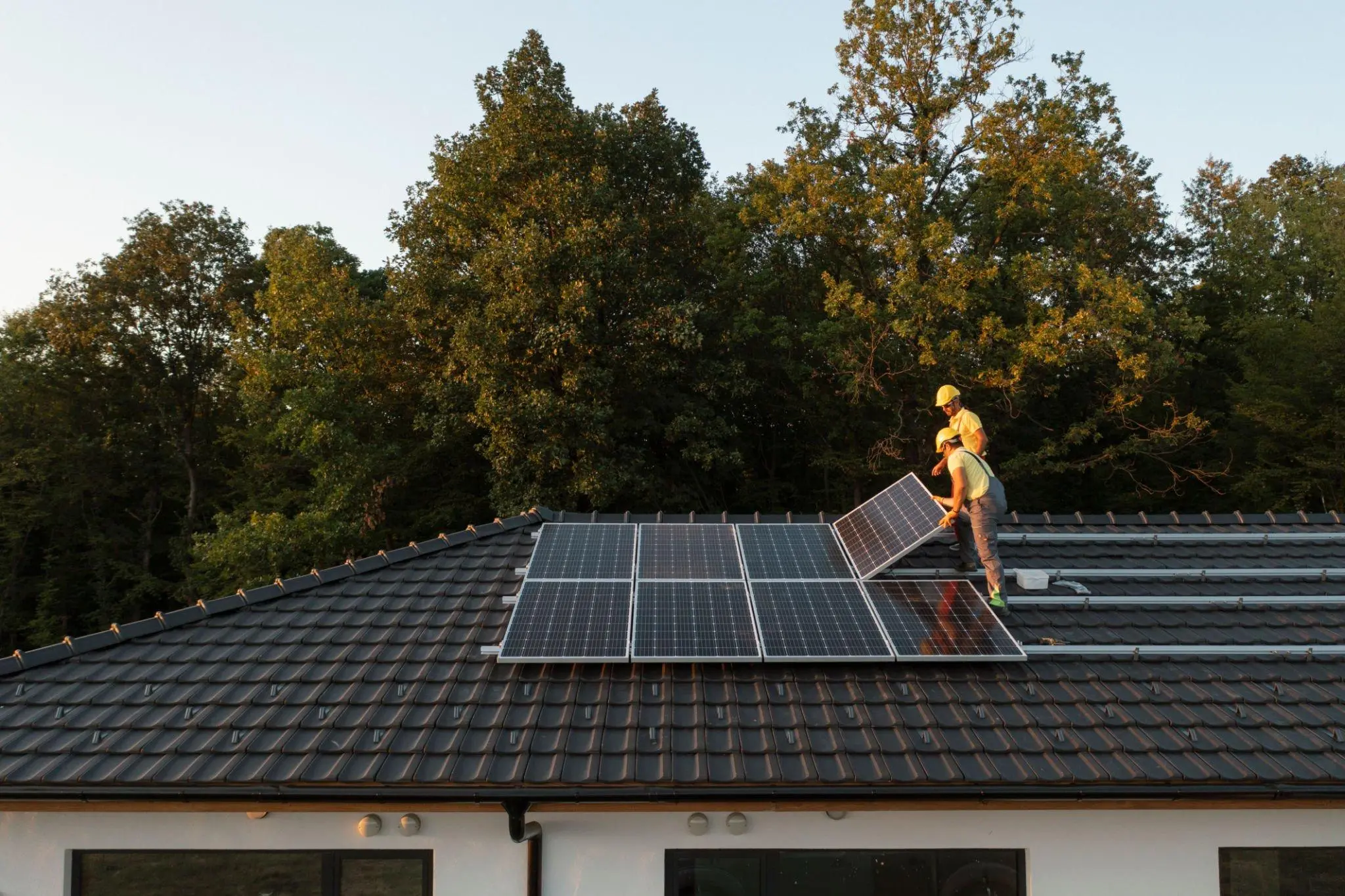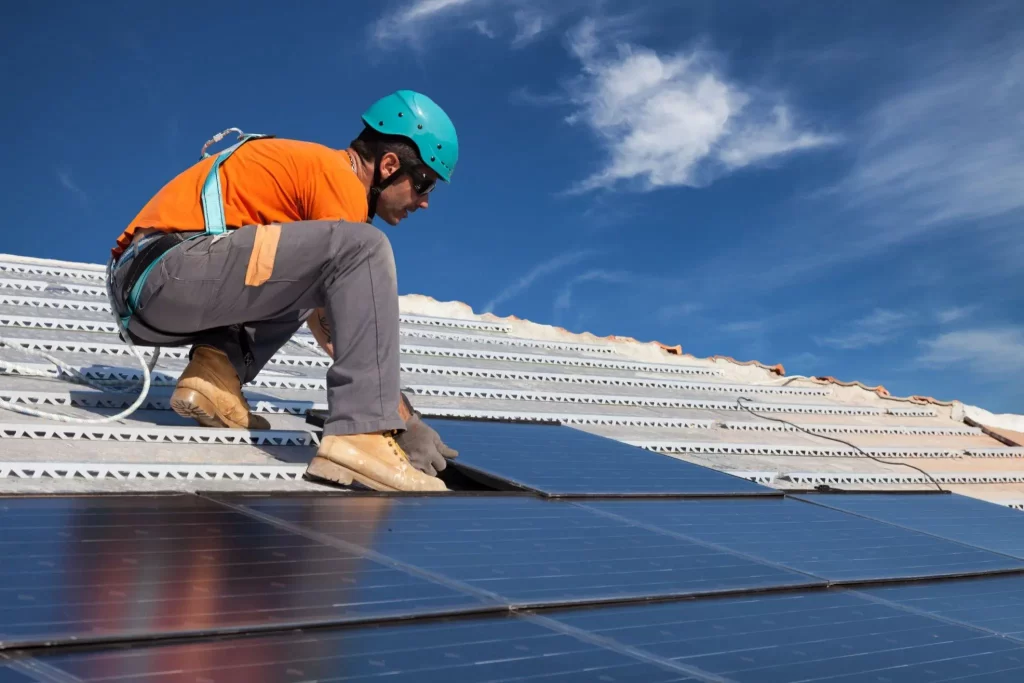Unveiling the Potential: How Much Power Does a 6.6kW Solar System Produce per Day in Sydney?
Solar energy harnesses the power of sunlight to generate electricity through photovoltaic cells or solar thermal systems. It’s a renewable, sustainable energy source that produces no emissions, offering a clean alternative to fossil fuels. Solar technology continues to advance, making it increasingly accessible and cost-effective worldwide.
- Importance of Solar Energy in Sydney:
Sydney, with its abundant sunshine, is a prime location for solar energy adoption. Solar power reduces reliance on traditional grid electricity, lowering utility bills and carbon emissions. In a city prone to heat waves and rising energy demands, solar energy helps stabilize the grid, enhances energy security, and supports a more sustainable future.
- Focus on 6.6kW Solar Systems
A 6.6kW solar system is a popular choice for residential and commercial installations, striking a balance between affordability and performance. With sufficient roof space and optimal orientation, it can significantly offset electricity consumption, leading to substantial savings over time. Understanding its capabilities and benefits is crucial for maximizing its potential in Sydney’s sunny climate.

Understanding Solar System Ratings
A. Explaining the kW Rating:
The kW rating of a solar system indicates its power output under specific conditions. It represents the maximum amount of electricity the system can produce at any given moment. Understanding this rating helps consumers gauge the system’s capacity and suitability for their energy needs.
B. Factors Affecting Solar System Performance:
Several factors influence the performance of a solar system, including sunlight intensity, shading, and orientation of panels, temperature, and system efficiency. Each of these variables can impact the system’s output, efficiency, and overall effectiveness in converting sunlight into electricity.
C. Realistic Expectations for Solar Output:
While solar systems can generate significant amounts of electricity, actual output varies due to factors like weather patterns, time of day, and seasonal changes. By setting realistic expectations based on factors like location, system size, and efficiency, consumers can better understand the potential output and benefits of their solar investment.

Solar Energy in Sydney
A. Sydney’s Climate and Solar Potential:
Sydney boasts a temperate climate with ample sunshine throughout the year, making it ideal for solar energy generation. Its mild winters and hot summers ensure consistent solar irradiation, maximizing the potential for solar power generation. Understanding Sydney’s climate helps assess the feasibility and benefits of installing solar systems.
B. Solar Radiation Levels in Sydney:
Sydney experiences high levels of solar radiation, with an average of around 5 to 6 peak sun hours per day. This abundant sunlight provides an excellent resource for solar energy generation, allowing solar panels to capture and convert sunlight into electricity efficiently. Monitoring solar radiation levels helps optimize system performance and output.
C. Government Support and Incentives:
The Australian government offers various support mechanisms and incentives to encourage solar energy adoption in Sydney and across the country. These include rebates, feed-in tariffs, tax credits, and grants aimed at reducing the upfront costs of installing solar systems and promoting renewable energy generation. Understanding and leveraging these incentives can significantly enhance the financial viability of solar projects.
Anatomy of a 6.6kW Solar System
A. Components of a Solar System:
A solar system comprises several key components, including solar panels, inverters, mounting hardware, wiring, and monitoring systems. Solar panels capture sunlight and convert it into electricity, while inverters convert this electricity from direct current (DC) to alternating current (AC) suitable for household use. Mounting hardware secures panels to roofs or ground mounts, while monitoring systems track system performance.
B. Sizing and Design Considerations:
Proper sizing and design are crucial for optimizing the performance and efficiency of a solar system. Factors such as energy consumption patterns, available roof space, shading, panel orientation, and local regulations must be considered when determining the size and layout of the system. Careful planning ensures that the system meets the energy needs of the property while maximizing solar potential.
C. Installation and Maintenance:
Installation of a solar system involves mounting panels, connecting wiring, and installing inverters and monitoring systems. It’s essential to hire a qualified and experienced installer to ensure proper setup and compliance with safety standards. Regular maintenance, including cleaning panels, inspecting wiring, and monitoring system performance, is necessary to ensure optimal operation and longevity of the solar system.
Estimating Daily Power Production
A. Calculating Solar Panel Output:
Solar panel output is calculated based on factors such as panel efficiency, sunlight intensity, and panel orientation. The total output can be estimated by multiplying the rated capacity of the panels (in watts) by the number of peak sun hours received per day. This calculation provides an approximation of the energy produced by the solar panels under ideal conditions.
B. Accounting for Factors like Shading and Angle:
Shading and panel angle significantly affect solar panel performance. Shading from nearby trees, buildings, or obstructions can reduce sunlight exposure and lower energy production. Additionally, the angle at which panels are installed relative to the sun’s path affects their efficiency. Proper site assessment and panel placement are essential to minimize shading and optimize solar panel performance.
C. Case Study: Typical Output in Sydney:
A case study analysing the typical output of a solar system in Sydney provides valuable insights into its performance. By considering factors such as panel capacity, orientation, shading, and local weather patterns, an estimate of daily energy production can be derived. This real-world example helps consumers understand the potential benefits and limitations of solar energy in Sydney’s climate.
Optimizing Solar System Performance
A. Choosing the Right Panels and Inverters:
Selecting the appropriate solar panels and inverters is crucial for optimizing the performance and longevity of a solar system. Factors to consider include panel efficiency, durability, warranty, and compatibility with the inverter. High-quality panels and inverters ensure reliable energy production and maximize the return on investment.
B. Monitoring and Managing Energy Consumption:
Monitoring and managing energy consumption enable homeowners to track their electricity usage and identify opportunities for efficiency improvements. Smart energy monitoring systems provide real-time data on energy production and consumption, allowing users to adjust their usage habits accordingly. By understanding their energy patterns, consumers can optimize their solar system’s performance and reduce overall electricity costs.
C. Maximizing Efficiency with Storage Solutions:
Integrating storage solutions such as batteries with a solar system enables homeowners to store excess energy generated during the day for use during periods of low sunlight or high energy demand. Battery storage systems enhance energy independence, resilience, and flexibility, allowing users to maximize self-consumption of solar energy and reduce reliance on the grid. Choosing the right storage solution and properly sizing the system are essential for maximizing efficiency and cost-effectiveness.
Economic and Environmental Implications
A. Cost Savings and Return on Investment:
Investing in solar energy offers significant cost savings over the long term. By generating electricity from sunlight, solar systems reduce reliance on grid electricity, resulting in lower energy bills. Additionally, government incentives and rebates can further reduce the upfront costs of installing solar panels, improving the return on investment. Over time, the savings on electricity bills often outweigh the initial investment, providing homeowners with a solid return on investment.
B. Environmental Benefits of Solar Energy:
Solar energy is a clean and renewable energy source that produces minimal greenhouse gas emissions compared to fossil fuels. By harnessing sunlight to generate electricity, solar systems help reduce carbon emissions, mitigate air and water pollution, and combat climate change. Additionally, solar energy reduces reliance on finite fossil fuel resources, promoting energy independence and security.
C. Contributing to a Sustainable Future:
Choosing solar energy contributes to a sustainable future by reducing dependence on fossil fuels and promoting the transition to clean, renewable energy sources. By investing in solar technology, individuals and businesses play a crucial role in reducing environmental impact, conserving natural resources, and fostering a more sustainable energy system. Embracing solar energy helps create a cleaner, healthier planet for future generations.
Challenges and Considerations
A. Grid Connection and Net Metering:
Grid connection is essential for solar systems to export excess electricity to the grid and import electricity when solar production is insufficient. Net metering allows homeowners to receive credits for surplus electricity fed into the grid, which can offset future electricity bills. Understanding grid connection requirements and net metering policies is crucial for maximizing the financial benefits of solar energy.
B. Regulatory and Permitting Processes:
Navigating regulatory and permitting processes is a necessary step in installing a solar system. Local regulations, building codes, and permitting requirements vary by jurisdiction and may dictate aspects such as system size, placement, and safety standards. Compliance with these regulations ensures the legality and safety of the solar installation and prevents potential issues during or after installation.
C. Maintenance and Long-Term Performance:
Regular maintenance is key to ensuring the long-term performance and efficiency of a solar system. Tasks such as cleaning panels, inspecting wiring, and monitoring system performance help identify and address issues promptly, maximizing energy production and system lifespan. Additionally, monitoring system performance over time allows homeowners to detect any degradation or malfunctions early and take corrective action to maintain optimal performance.
Conclusion
A. Recap of Key Points:
In this blog, we’ve explored various aspects of solar energy, focusing on the performance and potential of 6.6kW solar systems in Sydney. We discussed factors affecting solar output, system components, installation considerations, economic and environmental benefits, regulatory aspects, and long-term maintenance. Understanding these key points is essential for making informed decisions about adopting solar energy.
B. Empowering Sydney with Solar Energy:
Sydney’s abundant sunlight and supportive policies make it an ideal location for embracing solar energy. By harnessing the power of the sun, residents and businesses can reduce electricity bills, decrease carbon emissions, and contribute to a more sustainable future. Empowering Sydney with solar energy not only benefits individual consumers but also strengthens the city’s resilience and energy security.
C. Looking Ahead: Future of Solar Technology:
The future of solar technology holds promising advancements in efficiency, affordability, and integration. Innovations such as perovskite solar cells, bifacial panels, and solar tracking systems aim to further enhance the performance and accessibility of solar energy. Additionally, advancements in energy storage, smart grid technologies, and artificial intelligence are poised to revolutionize how solar energy is generated, stored, and managed. As solar technology continues to evolve, its role in the global energy landscape will only become more significant.
Frequently Asked Questions
Various factors, including sunlight intensity, panel efficiency, shading, and weather conditions, impact the system’s energy production.
While it can significantly offset your energy consumption, powering your entire home depends on factors like energy usage patterns and system size.
Government incentives, such as the Small-scale Renewable Energy Scheme, can substantially lower installation costs, making solar adoption more appealing.
Yes, you can invest in battery storage systems to store excess energy generated during the day for use at night or during cloudy periods.
The payback period varies, but it typically ranges from 3 to 6 years, depending on factors like energy savings and incentives.
Routine maintenance, such as cleaning panels and checking for debris, is recommended to ensure optimal performance and longevity.

Call Us Anytime
1300 812 911,
WhatsApp : 0404718625






